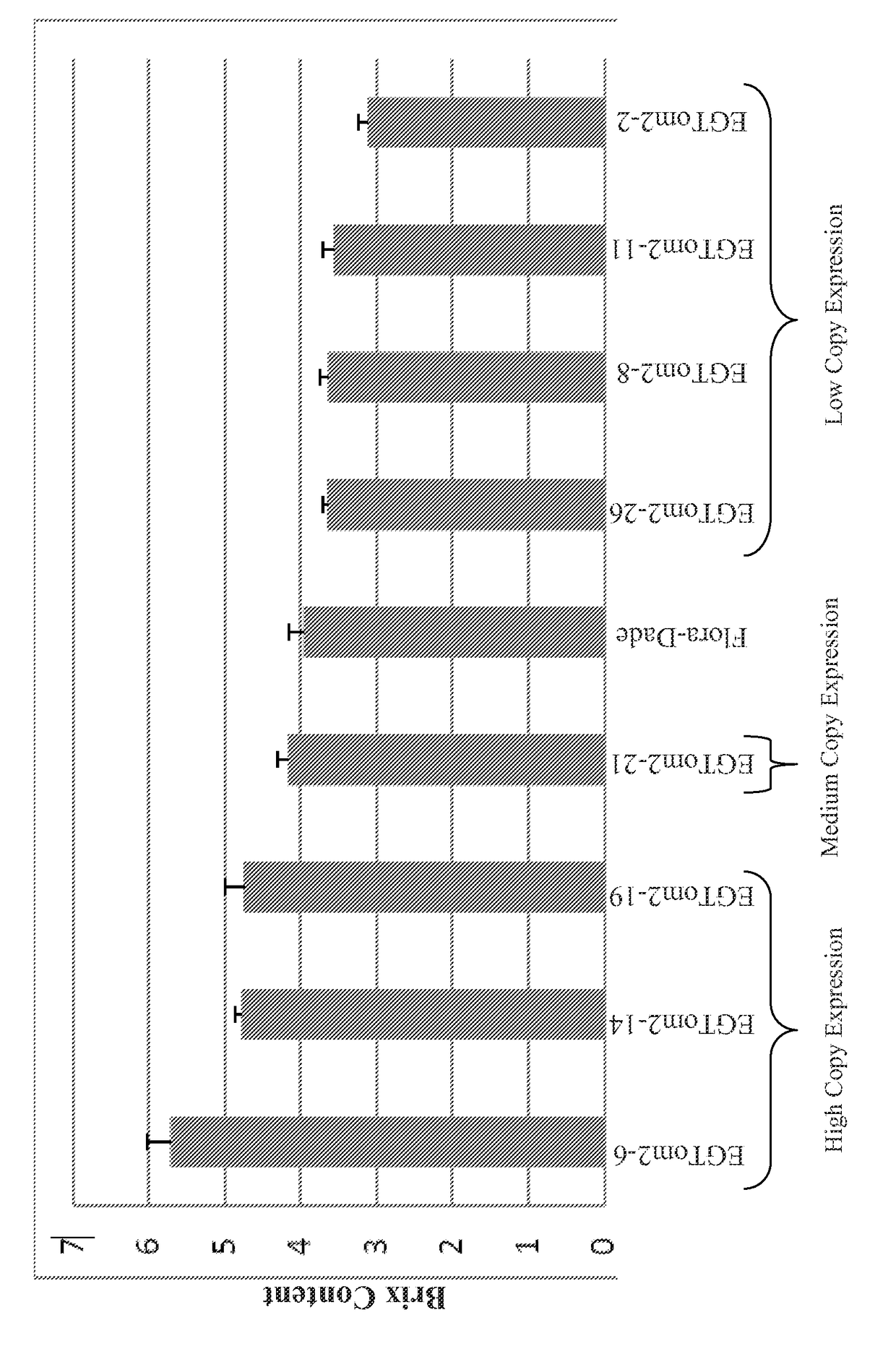Identification and use of tomato genes controlling salt/drought tolerance and fruit sweetness
a technology of tomato genes and salt/drought tolerance, which is applied in the field of identification and use of nucleic acid sequences for salt/drought tolerance and fruit sweetness in plants, can solve the problems of 24 million acres of arable land being abandoned, current food consumption levels becoming unacceptable to more people, and reducing the number of cultivated crops. , the effect of improving plant health and adaptability
- Summary
- Abstract
- Description
- Claims
- Application Information
AI Technical Summary
Benefits of technology
Problems solved by technology
Method used
Image
Examples
example 1
ation of Salt / Drought Tolerance and Fruit Sugar Content Genes in Tomato
[0239]EST sequences representing the expressed genes of the cultivated tomato genome were obtained from GenBank.
[0240]As discussed in more detail herein, the Galapagos tomato (Solanum cheesmaniae) transcriptome was sequenced, Ka / Ks analysis of homologous gene pairs between cultivated tomato and Galapagos tomato were performed, and preliminary validation was done to show that the positively selected tomato genes that were identified likely have roles in salt / drought tolerance or in controlling fruit sugar content.
[0241]All tissues were collected from Galapagos tomato plants (S. cheesmaniae) grown from seeds from the C.M. Rick Tomato Genetics Resource Center (TGRC). Seed germination success was enhanced by soaking seeds in a dilute (1%) bleach solution for 24 hours.
[0242]RNAs were pooled from multiple tissues (including roots, stems, flowers and fruit) and multiple life stages of the Galapagos tomato plants grown a...
example 2
n of Gene Function
[0248]The two candidate genes EGTom1 and EGTom2 were first investigated in silico; we BLASTed the sequences against the GenBank database in order to verify possible function (both biochemical and in the organism).
[0249]EGTom1 codes for a protein that is homologous to proteins known to participate in drought stress-response pathways.
[0250]BLAST results for EGTom2 recovered ESTs from several different species, including both dicots and monocots. Many ESTs were recovered for tomato; nearly all were from tomato fruits, and a few from tomato flowers in later stages of development. Another frequent source for EST orthologs of EGTom2 was the wine grape (Vitis vinifera). The EGTom ortholog discovered in wine grape is included in (SEQ ID NO: 13).
[0251]The most common sources of monocot EST hits for EGTom2 were sugarcane (Saccharum officinarum) and corn kernels (Zea mays). EGTom2 showed homology to genes that code for a subset of hydroxyacid dehydrogenase proteins. The scien...
example 3
ation of Tomato with EGTom1 and / or EGTom2
[0252]The two candidate genes EGTom1 and EGTom2 were cloned into appropriate expression vectors for use in transgenic tomatoes.
[0253]Transgenic cultivated tomato (var. ‘Micro-Tom’) will be prepared using the different alleles found for each positively selected gene (i.e., EGTom1 and EGTom2) and the impact of specific alleles will be measured on drought / salt-tolerance, and fruit sugar content, respectively.
[0254]Cultivated tomato plants can be transformed with a construct containing EGTom1 and / or EGTom2 using standard transformation technology for tomato plants. Sec, e.g., Antonio Di Matteo et al. (2011) Genetic Transformation in Tomato: Novel Tools to Improve Fruit Quality and Pharmaceutical Production, Genetic Transformation, Prof. Maria Alvarez (Ed.), ISBN: 978-953-307-364-4, InTech.
[0255]The EGTom1-transformed ‘Micro-Tom’ plants can be tested for salt / drought tolerance and the EGTom2-transformed ‘Micro-Tom’ plants can be tested for fruit s...
PUM
| Property | Measurement | Unit |
|---|---|---|
| threshold | aaaaa | aaaaa |
| size | aaaaa | aaaaa |
| physical/chemical | aaaaa | aaaaa |
Abstract
Description
Claims
Application Information
 Login to View More
Login to View More - R&D
- Intellectual Property
- Life Sciences
- Materials
- Tech Scout
- Unparalleled Data Quality
- Higher Quality Content
- 60% Fewer Hallucinations
Browse by: Latest US Patents, China's latest patents, Technical Efficacy Thesaurus, Application Domain, Technology Topic, Popular Technical Reports.
© 2025 PatSnap. All rights reserved.Legal|Privacy policy|Modern Slavery Act Transparency Statement|Sitemap|About US| Contact US: help@patsnap.com

